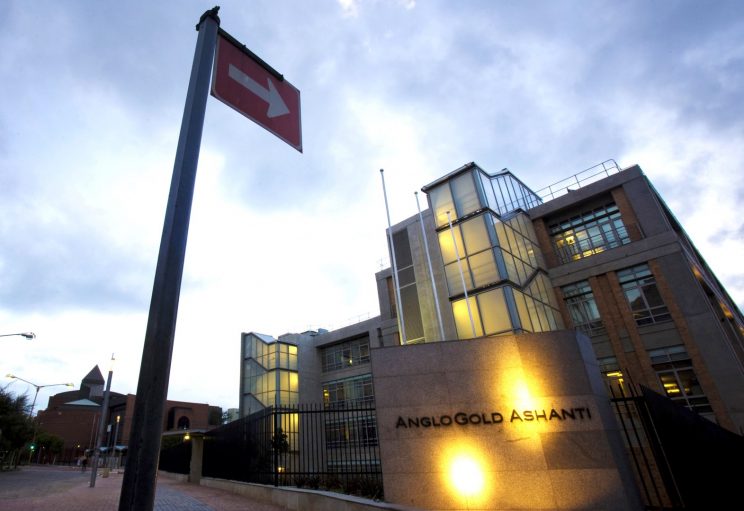End of an era … AngloGold Ashanti moves primary listing to New York

It’s goodbye Joburg and hello New York as JSE stalwart AngloGold Ashanti moves its primary listing to the New York Stock Exchange (NYSE) next week.
There will still be secondary listings on the JSE, A2X and Ghana Stock Exchange, but it’s been obvious for some time that a move to New York – with the corporate headquarters resettled to London – was needed to give it wider exposure to the massive US investor base and its deep pools of (cheaper) capital.
A key motivation for the move is the prospect of a richer valuation. Most of its peers on the NYSE trade at a premium of more than 25% to AngloGold, and the US has the highest concentration of mining-focused capital in the world. The US primary listing is expected to narrow the valuation gap relative to its peers and bring it to the attention of an investing public hungry for new stories in the gold sector.
This requires some corporate restructuring, with a new entity, AngloGold Ashanti plc, acquiring all of AngloGold Ashanti’s operations and assets located outside South Africa, subject to acceptance of the offer by shareholders, who will then be offered shares in the new entity.
Trading on the NYSE will start on 25 September.
Trade in AngloGold shares will be suspended on the JSE and A2X on 20 September, while the secondary listing under the code ANG commences the same day.
The Public Investment Corporation (PIC) is AngloGold’s single largest shareholder, with just short of 16%.
There is a tax cost to the transaction of roughly 5% of AngloGold’s market cap, which equates to about R7 billion. This is to be funded out of cash reserves and existing debt facilities.
The long march to London and New York
There is a pattern of SA companies with primary listings abroad with a secondary listing in SA.
Anglo American decided to move its primary listing to London in 1999 for many of the reasons AngloGold Ashanti cited – cheaper capital and higher visibility among investors.
This is the latest chapter in the storied history of the Anglo American combine. What was once a pillar of the SA economy with a formidable presence in everything from paper to chemicals and banking was broken up in stages, with AngloGold Ashanti being spun out of Anglo American in 2007 to forge its own path as a focused gold producer. It no longer has any operating assets in SA, having disposed of its last remaining SA assets, including the Mponeng Gold Mine, in 2020.
In the 1980s, Anglo accounted for a staggering 25% of South Africa’s GDP and an estimated 60% of the JSE.
It was the engine that drove SA’s industrialisation from the turn of the previous century and dominated virtually everything it touched. The apartheid-era international boycott kept it grounded in SA, with a few assets scattered around the sub-continent. That forced it to reinvest its enormous cash flows back into the domestic economy, which accounts for its outsized dominance of so many sectors in mining, finance and manufacturing.
Like all conglomerates, it became a breeding ground for inefficiency, and when the international boycott was lifted in the early 1990s, it started unbundling non-core assets and joined the global race for plumb assets in Africa and elsewhere.
The NYSE listing comes with certain obvious benefits, such as deeper liquidity, equity market indexation and greater sell-side research coverage.
The company says the NYSE primary listing with its headquarters in London will result in an efficient legal, regulatory and tax framework, which will benefit shareholders in the longer term.
South African shareholders will be able to hold AngloGold Ashanti plc shares without having to use their foreign investment allowance and still trade their shares on the JSE and A2X.
Operations and deals
It currently has operations in seven countries (Argentina, Australia, Brazil, Ghana, Guinea, Democratic Republic of Congo and Tanzania), with growth projects in Colombia and the US.
Earlier this year, it announced a proposed joint venture with Gold Fields, combining two world-class mines located in Tarkwa in Ghana that are capable of producing 900 000 ounces of gold over the first five years.
The only other major deal announced recently was the $370 million purchase in 2022 of Canadian mineral exploration company Corvus Gold, which neighbours its own projects in Nevada in the US. These combined assets stand a reasonable chance of developing into a decent-sized mine within three years.
All-in sustaining costs (AISCs) for its Tier 1 assets, comprising the rump of its portfolio, came in at $1 236/oz against an average gold price of $1 696/oz over the preceding 12 months. By way of comparison, Newmont’s AISC was $1 211/oz in 2022.
Like most large gold miners, AngloGold is less concerned with growth at any cost. The real challenge is to keep its costs down, and the move to New York should help it in this regard.
The group will produce about three million ounces a year going forward, with sufficient replacement assets to maintain that output level.
In May, CEO Alberto Calderon said the move to New York would help unlock the potential in the portfolio of assets and would assist in reducing the cost of capital. It’s unlikely that a massive share rerating will happen overnight, but this should become evident over time.

